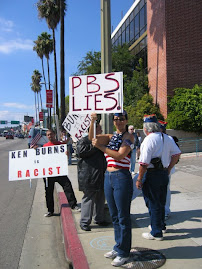
Last Tuesday evening, on March 26, approximately 150 persons answered the call of the Smithsonian Institution, in partnership with California State University Channel Islands, to participate in the Bracero History Project that seeks to preserve the memories and artifacts of former braceros who worked the farm factories of the United States from 1942 to 1964. Indeed, daughters, sons, and grandchildren accompanied braceros to Oxnard’s cultural center of Chicana/o art and community, the Café on A, to document their narratives to the nation’s history. In all, forty braceros volunteered their names to CSUCI students to participate in this important oral history project.
The stories of former braceros, and those who lived and worked with them, are of particular significance today as national leaders of the United States and Mexico reference the Bracero Program as a template to formulate a comprehensive immigration reform policy. The shortcomings of the Bracero Program of the past must be given special attention, however, as to protect the interests of workers and their families on both sides of the US-Mexico border. Documented by Ernesto Galarza as early as the late 1940s and Cesar Chavez the following decade, endemic problems with the Bracero Program entailed braceros working under the continuous threat of deportation if they complained about working conditions, the depression of the existing wage rate of resident agricultural workers, and collusion between state and federal agencies with agricultural associations in the subsidized acquisition and control of braceros. In fact, Carey McWilliams characterized the government’s transfer of the supervision of the Bracero Program from the diligent Farm Security Administration to the War Food Administration in 1943 as “tantamount to turning the whole program over to the farm associations.” Furthermore, the industry's leaders steadily employed braceros in an expanding array of jobs displacing resident workers.
The Smithsonian Institution’s Bracero History Project, in partnership with students throughout the nation like those at California State University Channel Islands, will surely promote a more complete appreciation of this labor program.
For interesting images visit: http://americanhistory.si.edu/onthemove/themes/story_51_5.html
The stories of former braceros, and those who lived and worked with them, are of particular significance today as national leaders of the United States and Mexico reference the Bracero Program as a template to formulate a comprehensive immigration reform policy. The shortcomings of the Bracero Program of the past must be given special attention, however, as to protect the interests of workers and their families on both sides of the US-Mexico border. Documented by Ernesto Galarza as early as the late 1940s and Cesar Chavez the following decade, endemic problems with the Bracero Program entailed braceros working under the continuous threat of deportation if they complained about working conditions, the depression of the existing wage rate of resident agricultural workers, and collusion between state and federal agencies with agricultural associations in the subsidized acquisition and control of braceros. In fact, Carey McWilliams characterized the government’s transfer of the supervision of the Bracero Program from the diligent Farm Security Administration to the War Food Administration in 1943 as “tantamount to turning the whole program over to the farm associations.” Furthermore, the industry's leaders steadily employed braceros in an expanding array of jobs displacing resident workers.
The Smithsonian Institution’s Bracero History Project, in partnership with students throughout the nation like those at California State University Channel Islands, will surely promote a more complete appreciation of this labor program.
For interesting images visit: http://americanhistory.si.edu/onthemove/themes/story_51_5.html
The one above is titled: Bracero workers being fumigated (with DDT)
fpb
fpb

2 comments:
Frank, if you're willing to follow up this post, I'd like to hear more specifics about the Smithsonian project and CSUCI's role in it. (As always, your mention of Carey McWilliams caught the attention of my computer.)
Peter,
The Smithsonian’s National Museum and its partner, the University of Texas El Paso, are hosting a series of “collection days” throughout the nation to record oral histories as part of the Bracero History Project. The project seeks to preserve and collect the history of this guest worker program.
The collection/town hall day detailed in my blog is one among many that have taken place over the last two years, in California, Illinois and Texas as an outreach to persons connected directly and indirectly to the Bracero Program. The next step in this Ventura County endeavor is to have CSU Channels meet with Bracero subjects to conduct oral history interviews. The Smithsonian and UTEP provided our students oral history training and materials in this regard and will transcribe and archive selected interviews.
Interestingly, McWilliams credits Ernesto Galarza, whose papers I researched at Palo Alto when we met for dinner last year, and Manual Gamio for proposing the idea of a guest worker program. This is ironic since Galarza would become one of the BP's ardent critics.
BTW: Oxnard was reputedly the home to the largest bracero camp in the nation. It was created by the Ventura County Farm Labor Association and named the Buena Vista camp.
frank
Post a Comment